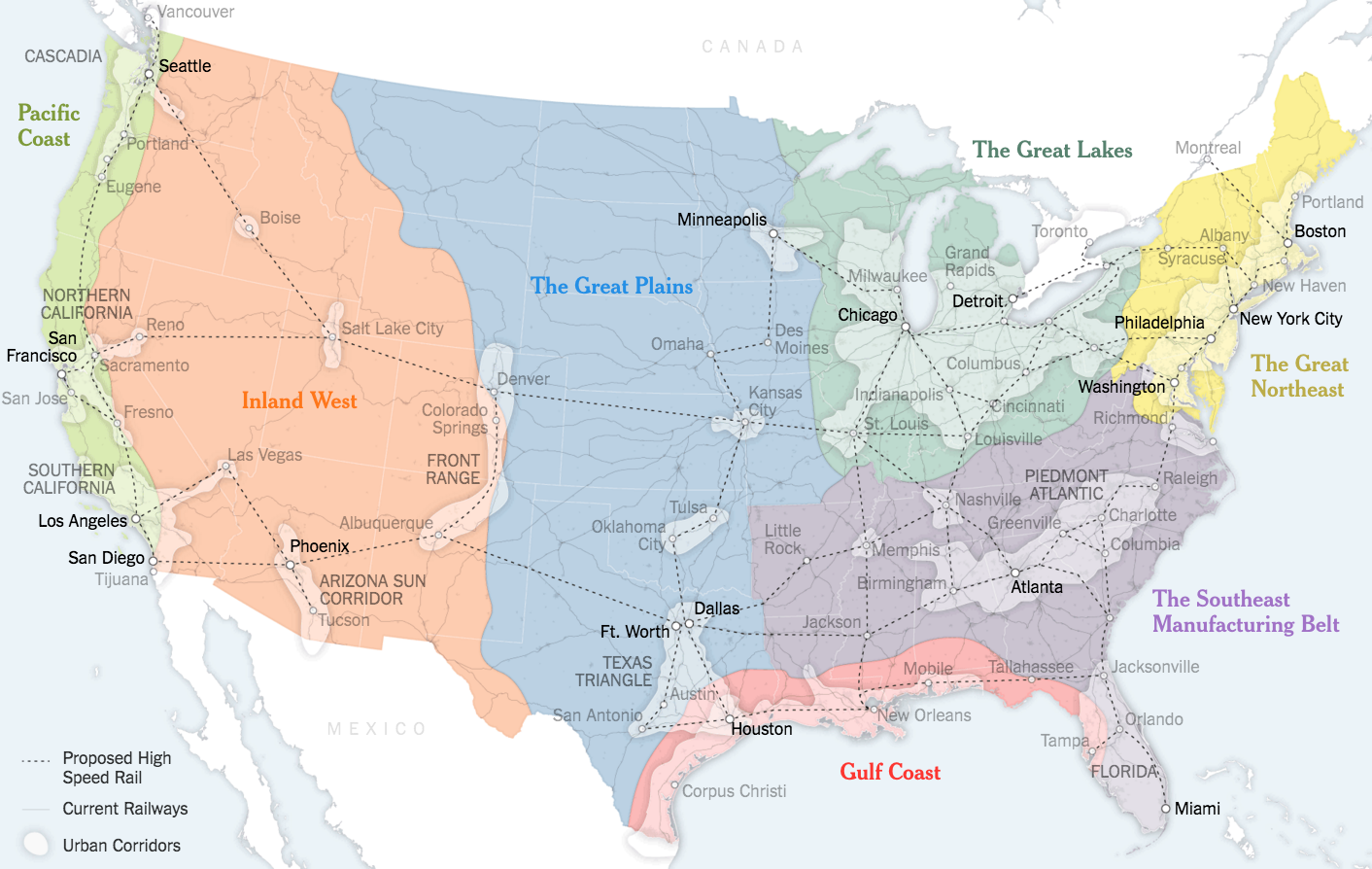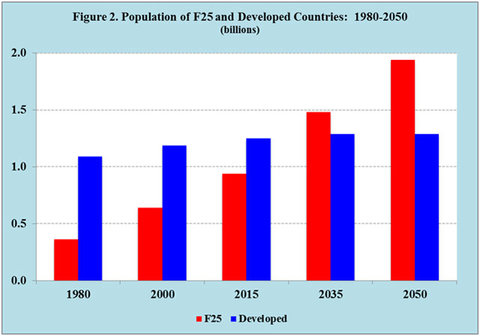DotEarth NYT Blog Reviews Khanna’s “New Map For America”
Dot Earth - NYTimes Blog |
 How the lower 48 states could be realigned into seven mega-regions (larger).Credit Sources: Joel Kotki (boundaries and names of 7 mega-regions); Forbes Magazin; Regional Plan Association; Census Bureau; nited State High Speed Rail Association; Clare Trainor/University of Wisconsin-Madison Cartography Laboratory.
How the lower 48 states could be realigned into seven mega-regions (larger).Credit Sources: Joel Kotki (boundaries and names of 7 mega-regions); Forbes Magazin; Regional Plan Association; Census Bureau; nited State High Speed Rail Association; Clare Trainor/University of Wisconsin-Madison Cartography Laboratory.
By Andrew C. Revkin
In an Op-Ed article this weekend, Parag Khanna, a Singapore-based analyst of geopolitical and economic trends, proposes a shift in the United States from state-focused policies and politics to regional planning:
States will continue to have an important political and regulatory function to fill. But the next president has to move beyond platitudes and implement a serious policy of leveraging new infrastructure investment from home and abroad and backing the shift toward a new urban political economy built around transportation engineering, alternative energy, digital technology and other advanced sectors.
The article draws on his new book, “Connectography.” His main ideas are also laid out in his new TED talk. Khanna points to China’s policies aimed at strengthening links among its emerging galaxies of megacities as a model.
In a related commentary in the Straits Times of Singapore, Khanna zooms in on China’s overseas investment patterns, all of which relate to bolstering supply chains and which could be seen as potentially exacerbating tensions as much as they build global relationships. Here’s an excerpt:
China is quickly becoming the world’s largest cross-border investor as measured by foreign exchange reserves, portfolio capital and foreign direct investment, with its total overseas holdings projected to reach US$20 trillion by 2020. China’s supply-chain grand strategy will therefore persist irrespective of today’s economic downturn and market volatility. In the coming decade, this competition to control supply chains is how we will see geopolitics playing out. Many people view geopolitics as being about the bending of borders. But in the 21st century, we should pay more attention to the bending of supply chains.
I recommend his work to anyone interested in how flows of information, travel, money and goods, particularly among megacities, are rendering traditional notions of borders and power centers obsolete. (For more, click back to his 2009 TED Global talk on the sources of border conflicts and options for defusing them.)
Of course, I have to test whether I’m exhibiting confirmation bias, given how I’ve long pointed to the benefits of connectivity, using my shorthand term “knowosphere.” I remain convinced that there’s merit in what I wrote on The Conversation in 2014:
[T]he rapid expansion of light-speed global connectedness is explosively facilitating the sharing and shaping of ideas in ways that promise to fast-forward humanity’s ability to get the right information or expertise to the right place or problem at the right time.
There are counterarguments, of course. In the United States, it’s fine to pitch the merits of regional infrastructure planning, but tough to get past lawmakers’ focus on earmarking. (Things can be even worse at the state level, as I learned covering the Hudson Valley for The Times in the 1990s and seeing parochial competition among neighbouring counties persistently trumping arguments for economic strategies benefitting the region.)
At the global level, the general notion that connectedness is spreading progress runs up against troubling patterns in the planet’s poorest, or most poorly governed, places.
 A comparison and projection of the population in developed countries (blue) and the world’s top 25 “fragile” states (“F25”), as defined in the annual Fragile States Index of the Fund For Peace. Credit Joe Chamie and Barry Mirkin
A comparison and projection of the population in developed countries (blue) and the world’s top 25 “fragile” states (“F25”), as defined in the annual Fragile States Index of the Fund For Peace. Credit Joe Chamie and Barry Mirkin
To get the idea, read a sobering commentary on the growing population in countries deemed “fragile states” by Barry Mirkin and Joseph Chamie — the latter a demographer whose ideas have been featured here in the past (see “The Population Cluster Bomb?” and“What’s the Right Number of Americans?”).
I reached out to Matt Ridley about the fragile-states trend. His excitement about trade and connections as the root of progress underpinned his argument in “The Rational Optimist” and, more recently, “The Evolution of Everything.” He, like me, sees plenty of reasons to think the future is bright, but also the persistent possibility that human affairs could still go off the rails:
Yes, there are a lot of failing states. Government failure is the biggest and most harmful form of failure as it always has been — not commercial failure. Yet I still meet people who think commerce is the source of greater evil than government.
I am not convinced that the number of failing states is growing. Steve Pinker says the number of wars going on has halved in this century and you know his documentation of the falling war death rate. I often remind myself of the list of countries that were chaotic and violent in the news when I was young and are not now: Angola, Ireland, Vietnam, Cambodia, Mozambique, South Africa, Timor, Bangladesh…
All that said, I have never said a descent into global chaos is impossible and — as you say — I always said that things will get better only so long as they are allowed to. We can achieve a decline and fall of the world, as of Rome, if we want to. And yes, like many people I find today’s rampant extremism, especially Islamist extremism, pretty worrying. But I also think it’s possible that peace and prosperity may prevail for most people.
The problem — as ever — is chiefs, priests and thieves.